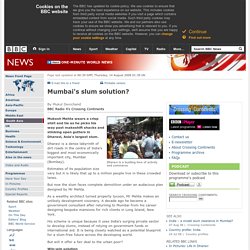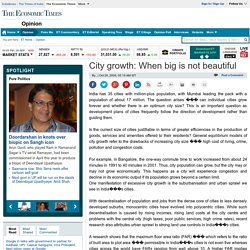

830921 GF752 STD. GF548. GF672. Heathrow third runway 'to breach climate change laws' Image copyright PA Plans to expand Heathrow Airport are set to breach the government’s climate change laws, advisers have warned.

The Committee on Climate Change says the business plan for Heathrow projects a 15% increase in aviation emissions by 2050. If that increase is allowed, members say, ministers will have to squeeze even deeper emissions cuts from other sectors of the economy. The government said it was determined to keep to its climate change targets. The Committee on Climate Change is a statutory body set up to advise the UK government on emissions targets. Weather and Climate.
Globalisation. Tectonics news. World cities. Geography. High Street suffers as more people favour out-of-town locations. Online sales of non-food products rose 11.7pc last month, boosted by the number of people surfing for post-Christmas bargains.

Shoes were the most popular items bought online. Over £1 in every £3 of footwear purchases was spent online. Shoes are the most popular items bought online One in ten shops are empty in Britain’s town centres, a figure that has remained steady for the last couple of years. However, Diane Wehrle, Retail Insights Director at Springboard, said the number could soon rise.
The best idea to redevelop Dharavi slum? Scrap the plans and start again. By 8am, Dharavi is already noisy.

Tea stalls already clinking, leather-making and embroidery and plastic-crushing machines already cranking through their long daily grind. Dharavi, the most well-known informal settlement in Mumbai, stands in a category of its own, and challenges the very notion of a slum. Mumbai's slum solution? Mukesh Mehta wears a crisp shirt and tie as he picks his way past makeshift shacks and stinking open gutters in Dharavi, Asia's largest slum.

Dharavi is a dense labyrinth of dirt roads in the centre of India's biggest and most economically important city, Mumbai (Bombay). Estimates of its population size vary but it is likely that up to a million people live in these crowded lanes. But now the slum faces complete demolition under an audacious plan designed by Mr Mehta. Iceland ash 2010. 11 geofile answering 40 mark ques. Sign In - ClickView. Dispatches. Flattened stalls and piles of wood: what’s left of Brixton Food Court. BrooksbankGeographyYr13 - Case Study - Effects of Counterurbanisation.
Counter- urbanisation is the migration of people from major urban areas to smaller urban settlements and rual areas.It first took place as a reaction to iner city deprivation and overcrowding with people moving from from towns and cities to new towns, estates or commuter towns and villages.New towns and estates were mainly built due to government schemes trying to rehome people from deprived inner cities, maily for the working class that had moved into the area looking for work.However, the commuter towns and villages are mainly aimed at middle class or socially mobile people because they can easily access nearby towns and cities by car, bus or maybe train.

CAUSES:One of the main causes of counter - urbanisation is that people want a better quality of life, they want to be able to live in a clean and quiet area without air and noise pollution, busy traffic, dirt and the crime of urban environments. One in 10 children has 'Aids defence' Image copyright SPL A 10th of children have a "monkey-like" immune system that stops them developing Aids, a study suggests.

The study, in Science Translational Medicine, found the children's immune systems were "keeping calm", which prevented them being wiped out. An untreated HIV infection will kill 60% of children within two and a half years, but the equivalent infection in monkeys is not fatal. The findings could lead to new immune-based therapies for HIV infection. The virus eventually wipes out the immune system, leaving the body vulnerable to other infections, what is known as acquired human immunodeficiency syndrome (Aids).
The researchers analysed the blood of 170 children from South Africa who had HIV, had never had antiretroviral therapy and yet had not developed Aids. City growth: When big is not beautiful. India has 35 cities with million-plus population, with Mumbai leading the pack with a population of about 17 million.

The question arises can individual cities grow forever and whether there is an optimum city size? INDONESIA'S URBAN STUDIES: Urbanization and Suburbanization in Jakarta. Obese patients 'surgery ban' in York to be reviewed. Pollution particles 'get into brain' Image copyright ZEPHYR/SCIENCE PHOTO LIBRARY Tiny particles of pollution have been discovered inside samples of brain tissue, according to new research.

Suspected of toxicity, the particles of iron oxide could conceivably contribute to diseases like Alzheimer's - though evidence for this is lacking. The finding - described as "dreadfully shocking" by the researchers - raises a host of new questions about the health risks of air pollution. Many studies have focused on the impact of dirty air on the lungs and heart. Now this new research provides the first evidence that minute particles of what is called magnetite, which can be derived from pollution, can find their way into the brain. Earlier this year the World Health Organisation warned that air pollution was leading to as many as three million premature deaths every year.